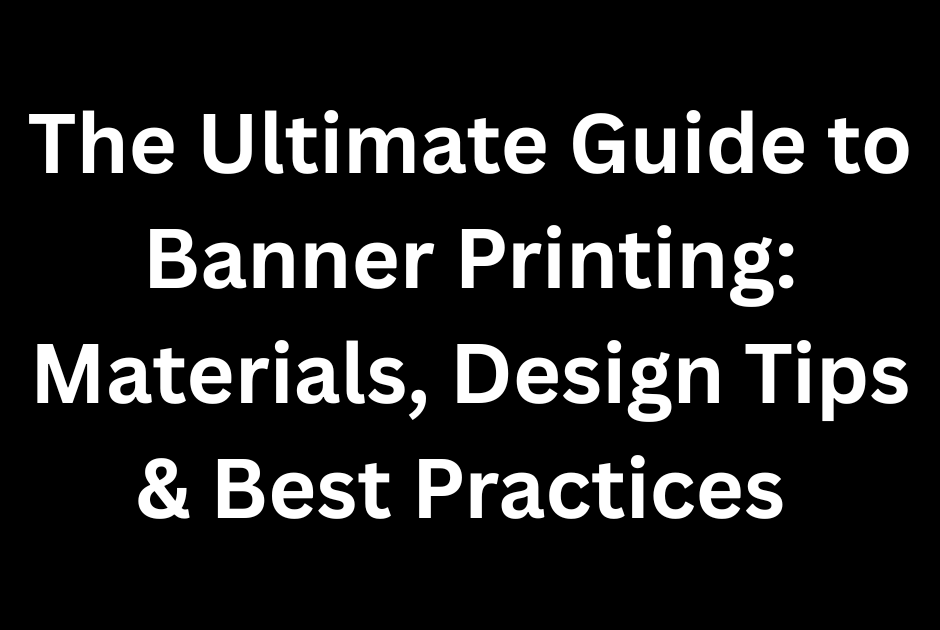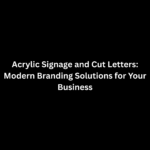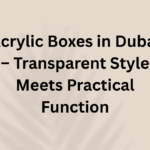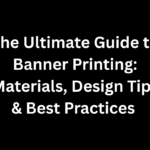In today’s competitive market, capturing attention is more challenging than ever. Whether you’re promoting a grand opening, announcing a sale, or participating in a trade show, banners remain one of the most effective tools for visual communication. Their versatility, cost-effectiveness, and high visibility make them indispensable for businesses and events alike.
This comprehensive guide delves into the world of banner printing, exploring the various materials available, design best practices, and tips to ensure your banners make a lasting impression.
Understanding Banner Materials
Selecting the right material is crucial for the durability and appearance of your banner. Here are the most commonly used materials:
1. Vinyl (PVC) Banners
Vinyl banners are the industry standard due to their durability and versatility. Made from polyvinyl chloride (PVC), they are suitable for both indoor and outdoor use. Vinyl banners are waterproof, fade-resistant, and can withstand various weather conditions.
Advantages:
Durable and long-lasting
Suitable for outdoor use
High-quality print output
Use Cases: Storefront displays, event promotions, trade shows
2. Mesh Banners
Mesh banners are designed with small holes that allow wind to pass through, reducing the risk of tearing. They are ideal for outdoor settings, especially in windy areas.
Advantages:
Wind-resistant
Lightweight
Suitable for large-scale outdoor advertising
Use Cases: Construction site fencing, outdoor events, building wraps
3. Fabric Banners
Fabric banners offer a premium look with vibrant colors and a soft texture. They are typically used indoors due to their delicate nature.
Advantages:
High-resolution print quality
Elegant appearance
Reusable and easy to transport
Use Cases: Indoor events, conferences, retail displays
Design Best Practices for Effective Banners
A well-designed banner can significantly impact its effectiveness. Here are key design considerations:
1. Clear and Concise Messaging
Your banner should convey its message quickly. Use bold headlines and limit text to essential information. Remember, viewers often have only a few seconds to read your banner.
2. High-Quality Images and Graphics
Ensure all images and graphics are high-resolution to prevent pixelation. Vector graphics are ideal for logos and illustrations as they scale without losing quality.
3. Readable Fonts
Choose fonts that are easy to read from a distance. Avoid overly decorative fonts and ensure sufficient contrast between text and background.
4. Brand Consistency
Incorporate your brand’s colors, logos, and messaging to maintain consistency across all marketing materials.
5. Call to Action (CTA)
Include a clear CTA, such as “Visit Our Store Today” or “Call Now,” to guide viewers toward the desired action.
Printing Techniques
Understanding the printing process can help you make informed decisions:
1. Digital Printing
Digital printing is the most common method for banner production. It offers quick turnaround times and is cost-effective for small to medium quantities.
Benefits:
High-quality prints
Fast production
Cost-effective for short runs
2. Screen Printing
Screen printing is ideal for large quantities of banners with the same design. It provides vibrant colors and is cost-effective for bulk orders.
Benefits:
Durable prints
Economical for large runs
Consistent color reproduction
Finishing Options
Finishing enhances the durability and functionality of your banner:
Hems: Reinforced edges to prevent fraying
Grommets: Metal rings for easy hanging
Pole Pockets: Sleeves for inserting poles
Wind Slits: Cuts that allow wind to pass through, reducing strain
Tips for Effective Banner Placement
Height and Visibility: Position banners at eye level or higher for maximum visibility.
Lighting: Ensure banners are well-lit, especially for indoor or nighttime events.
Location: Place banners in high-traffic areas to reach a broader audience.
Conclusion
Banner printing is a powerful marketing tool that, when executed correctly, can significantly enhance your brand’s visibility and engagement. By choosing the right materials, adhering to design best practices, and understanding printing techniques, you can create banners that not only capture attention but also drive results.
A: Vinyl (PVC) is the most durable and weather-resistant material for outdoor banner printing. It withstands rain, sunlight, and wind, making it ideal for long-term outdoor use.
A: Outdoor banners typically last 1 to 3 years, depending on the material, weather conditions, and exposure to sunlight. UV-protected prints last longer without fading.
A: Yes, most professional printing services offer fully customizable banner sizes to fit your specific location and display needs.
A: Vinyl banners are solid and vibrant, ideal for clear visuals. Mesh banners have tiny holes that allow wind to pass through, making them better suited for windy outdoor areas.
A: Many printing companies offer in-house graphic design services to help you create effective, eye-catching banner layouts tailored to your brand.





